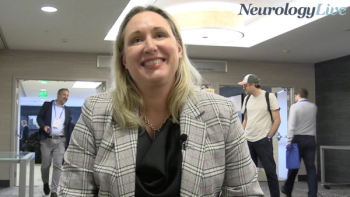
Fingolimod in Relapsing Pediatric Multiple Sclerosis
Brenda L. Banwell, MD: The federal drug agency in the United States, as well as other regulatory authorities around the world, determine when medications have been sufficiently studied in order to be granted regulatory approval. The advantage of regulatory approval for any therapy, particularly in a particular age group like pediatrics, is that this then helps us gain access to a medication and increases the likelihood—in the United States, anyway—of insurance approval for a prescription of a given medication. So it’s important, and it matters to patients. It matters when you’re trying to gain access. Of course, the FDA is a careful agency. Therefore, when approval is granted, it is based on strong evidence of effective therapy and on safety review.
Fingolimod being granted FDA approval indicates that, from the FDA’s perspective, the PARADIGMS study did, indeed, meet its endpoint and did, indeed, demonstrate sufficient effectiveness and safety to be granted regulatory approval. This has made it easier to prescribe fingolimod for pediatric MS [multiple sclerosis] patients.
Lauren B. Krupp, MD: The mechanism of action of fingolimod is interesting. It binds to a molecule, which is on the surface of lymphocytes: sphingosine-1-phosphate receptor. That molecule has an effect on the lymphocyte’s ability to get out of the lymph node. What normally happens is these immune cells, known as lymphocytes, are floating around your blood and lymphatic system. As they circulate, they stop off at weigh stations, which are the lymph nodes. They are in there for a little bit, and then they come back out. The fingolimod blocks this molecule on the surface or binds to it, so the lymphocyte can’t get out of the lymph node and back into the bloodstream.
The end result is that the number of circulating lymphocytes is lower in your bloodstream. However, it doesn’t affect those lymphocytes that are in your liver, kidneys, or other organs. They can be in those organs protecting you, which is what these immune cells do, but the ones that are able to cross through the blood-brain barrier into the central nervous system and cause damage—that subset of lymphocytes—are being reduced because they’re trapped in the lymph nodes. That’s more or less what we think is the general mechanism of action. There are potentially other effects as well. Some have thought that there are effects within the central nervous system that are neuroprotective. I think some of that is still being worked out. But the primary anti-inflammatory effect is on the lymphocytes.
Brenda L. Banwell, MD: Fingolimod now being approved for pediatrics will enhance our ability to prescribe it. That’s 1 important facet of having FDA approval. It is indicated for pediatric multiple sclerosis as a first-line therapy. What that means is that based on comparing fingolimod to a more traditional first-line therapy, as least in the adult MS world, interferon beta-1a, the study showed that fingolimod was superior. Therefore, the FDA took the stance that when comparing 2 treatments, the more effective treatment should be available at the beginning. You shouldn’t have to fail interferon in order to gain access to fingolimod.
That’s not how fingolimod has been registered across the world. In fact, interestingly, in most parts of the world, for adults, fingolimod is still second-line therapy. This means that in order to gain access to it, patients have to have failed first-line therapies such as interferon, for example, or glatiramer acetate. This reflects the landscape of approval processes that have been changing and evolving since these new MS therapies were initially proposed and designed in the late 1980s.
Of course, because there were no pediatric studies in the 1980s, 1990s, or early 2000s, we are at a different time point for the pediatric MS landscape, in terms of which treatments are going to be made first line, second line, or potentially even third line, by which I mean reserved for a small number of patients with, perhaps, particular forms of highly aggressive, relapsed characteristics.
Newsletter
Keep your finger on the pulse of neurology—subscribe to NeurologyLive for expert interviews, new data, and breakthrough treatment updates.




































